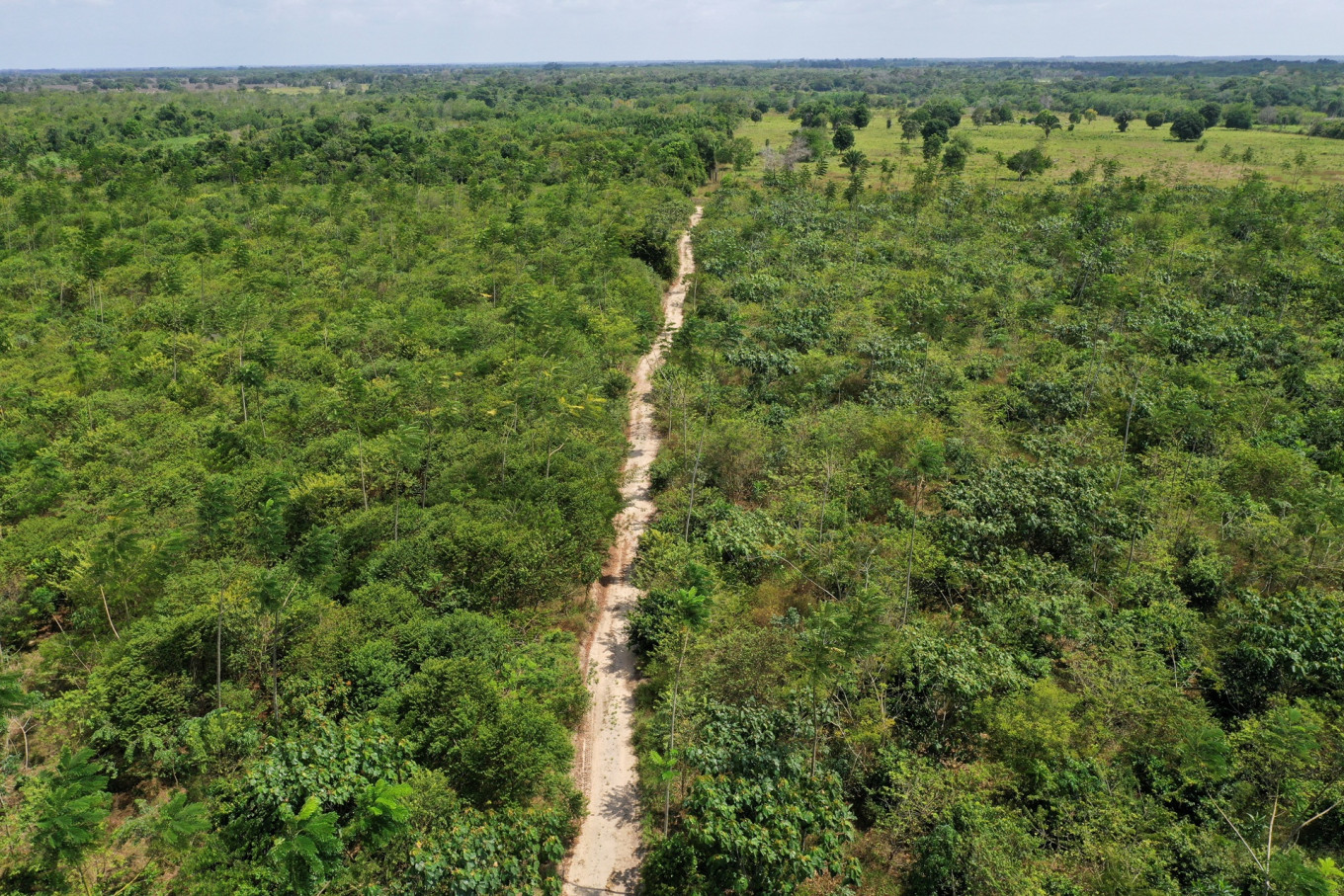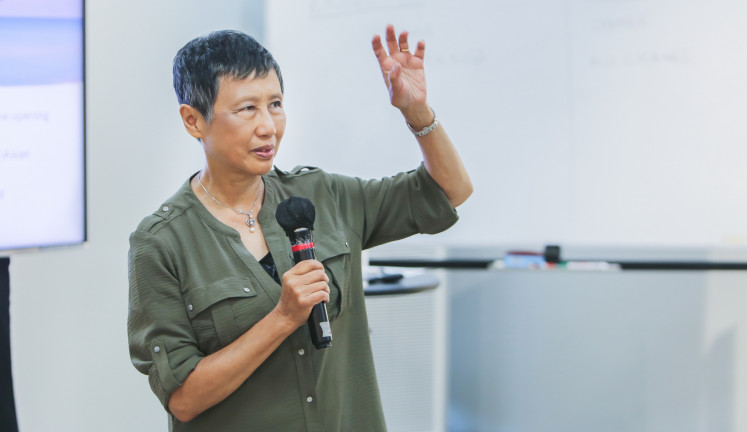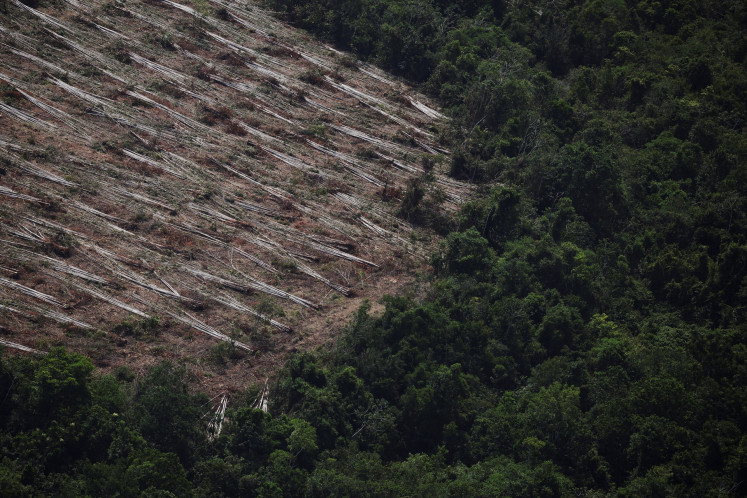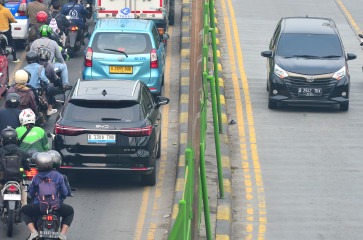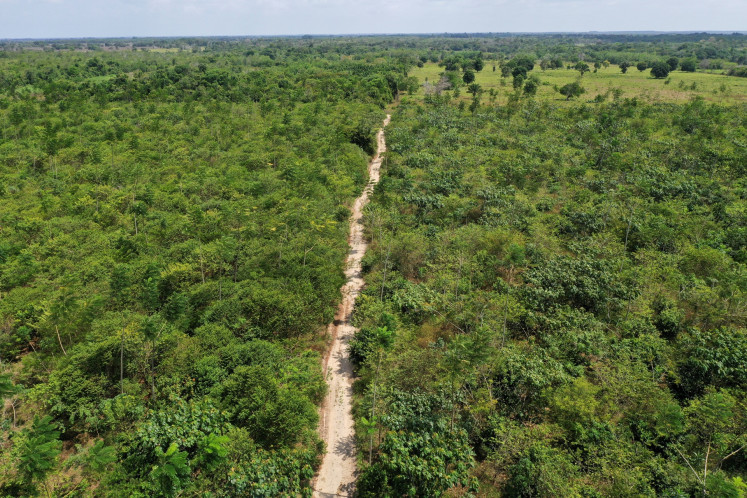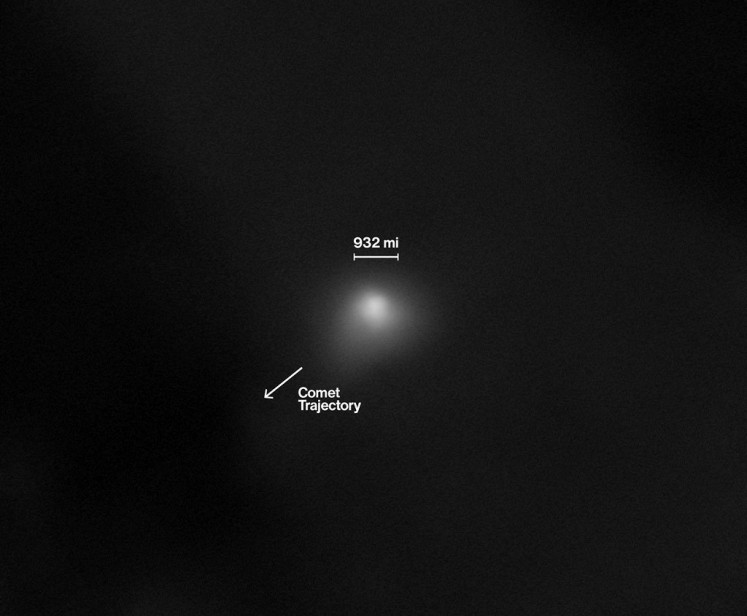Popular Reads
Top Results
Can't find what you're looking for?
View all search resultsPopular Reads
Top Results
Can't find what you're looking for?
View all search resultsNew tech could help COP30's Amazon rainforest protection goals
Using drones to survey land that can be hard to access, a company harnesses AI and other tech to analyze which areas would yield the best returns from restoration in terms of biodiversity, climate and local communities.
Change text size
Gift Premium Articles
to Anyone
W
here the Amazon rainforest meets the Atlantic Ocean, the Brazilian river island of Marajo is losing ground against sea-level rise as coastal erosion destroys the rich mangrove forests that act as its natural buffers.
Resembling upside-down tree roots, the tangled mangrove branches that extend into the water and provide a habitat for fish and crabs have been under increasing threat.
"Two years ago, [coastal erosion] destroyed the houses of the 15 residents who lived here on the beach. It was very strong," said Patricia Farias Ribeiro, also a local resident.
In response, researchers are using low-cost sensors to measure factors like air temperature, rainfall and tide levels to monitor the island, guide conservation efforts and support residents with useful information such as optimal times to fish.
"Over time, you can identify what changes are taking place, and we will correlate this with the biodiversity monitoring data," said Lisangela Cassiano of the government park service ICMBio.
Cassiano manages the RESEX Soure marine reserve on the island, one of three sites where ICMBio works with the International Union for Conservation of Nature (IUCN), Brazil to install the sensors built at the nearby Federal University of Para.
The island has lost up to 150 meters of coastline to erosion over the past 16 years, partly driven by sea-level rise due to climate change, according to a 2024 study published in the Ocean and Coastal Research journal.
Across the river in the city of Belem where the United Nations COP30 climate talks were taking place, the need to protect forests has been at the top of the agenda under host President Luiz Inácio Lula da Silva.
He used the summit to launch a new multilateral fund called the Tropical Forests Forever Facility (TFFF), which aims to protect vital biomes like the Amazon rainforest.
Brazil itself can boast some progress, with deforestation falling 11.08 percent in the 12 months to July 2025, compared with the same period a year earlier, reaching its lowest level since 2014, according to a report by Brazilian space research agency Inpe.
New technologies could play a major part and are already being used by re.green, an ecological restoration company that deploys AI and tech to restore forests in the Amazon and Atlantic forests in Brazil.
CEO Thiago Picolo aims to make forests financially viable by restoring them and generating revenues from carbon credits and sustainable timber.
His company was among the 2025 winners of the Earthshot Prize, a prestigious environmental award created by Britain's Prince William, and received a 1 million poundsterling (US$1.31 million) grant to advance its work.
Founded in 2021, re.green has purchased and leased 37,000 hectares, including restorable pastures, degraded forests and standing forests. Today, 17,000 ha are under active restoration, with interventions completed on 12,000 ha.
The company sells carbon credits to large corporations including Microsoft and Nestle.
"We take areas that were deforested in the past, decades, sometimes even centuries, ago, and we restore the original ecosystem that was there before," Picolo said.
Drones in the Amazon
Using drones to survey land that can be hard to access, re.green harnesses AI and other tech to analyze which areas would yield the best returns from restoration in terms of biodiversity, climate and local communities.
Their conversion rate is just 1.5 percent, meaning they close on fewer than two out of every 100 properties they analyze because of factors like environmental viability, rain levels or land prices. They also only buy from landowners, such as cattle ranchers, and do not use community-owned land.
An aerial view shows a deforested plot of the Amazon during a Greenpeace flyover amid the UN Climate Change Conference (COP30) near Cachoeira do Piria, state of Para, Brazil, on Nov. 13, 2025. (Reuters/Adriano Machado)Picolo said tech can help them reach scale by sifting through large datasets, and the drones boost efficiency, including by planting seeds and killing exotic grass that degrades land.
"The holy grail is for us to be able to do that with very high efficiency and access land that cannot be accessed through traditional tractors and agricultural implements," he said.
Picolo said re.green's projects provide local community jobs in science and tech and promote indirect entrepreneurship by allowing honey-producing companies to use their land and local people to harvest acai berries.
Helping nature recover
The model of restoration deployed depends on the local context, Picolo added.
It can involve intensive interventions where areas are highly degraded and require more planting, while other areas can undergo natural regeneration.
"Understanding where to use each model is fundamentally important," he said. "If we under-invest and rely on natural regeneration where nature is not able to regenerate itself, then you could end up with a very subpar type of forest.
"Tech and science need to be applied to what we do now so we can figure out how to make forests come back faster and better."
One way to do that is by making access to technology more affordable.
Renan Peixoto Rosario, a researcher from the Federal University of Para on the Marajo Island project, said the tech system was designed to be cheap, simple to maintain and easy to replicate in protected areas.
He said the system can be anywhere from five to 25 times cheaper than equivalent commercial solutions, thanks to its open-source hardware, 3D printing, local assembly and modular design, allowing easy replacement of parts.
"The goal," he said, "is to make monitoring affordable for remote coastal communities."

